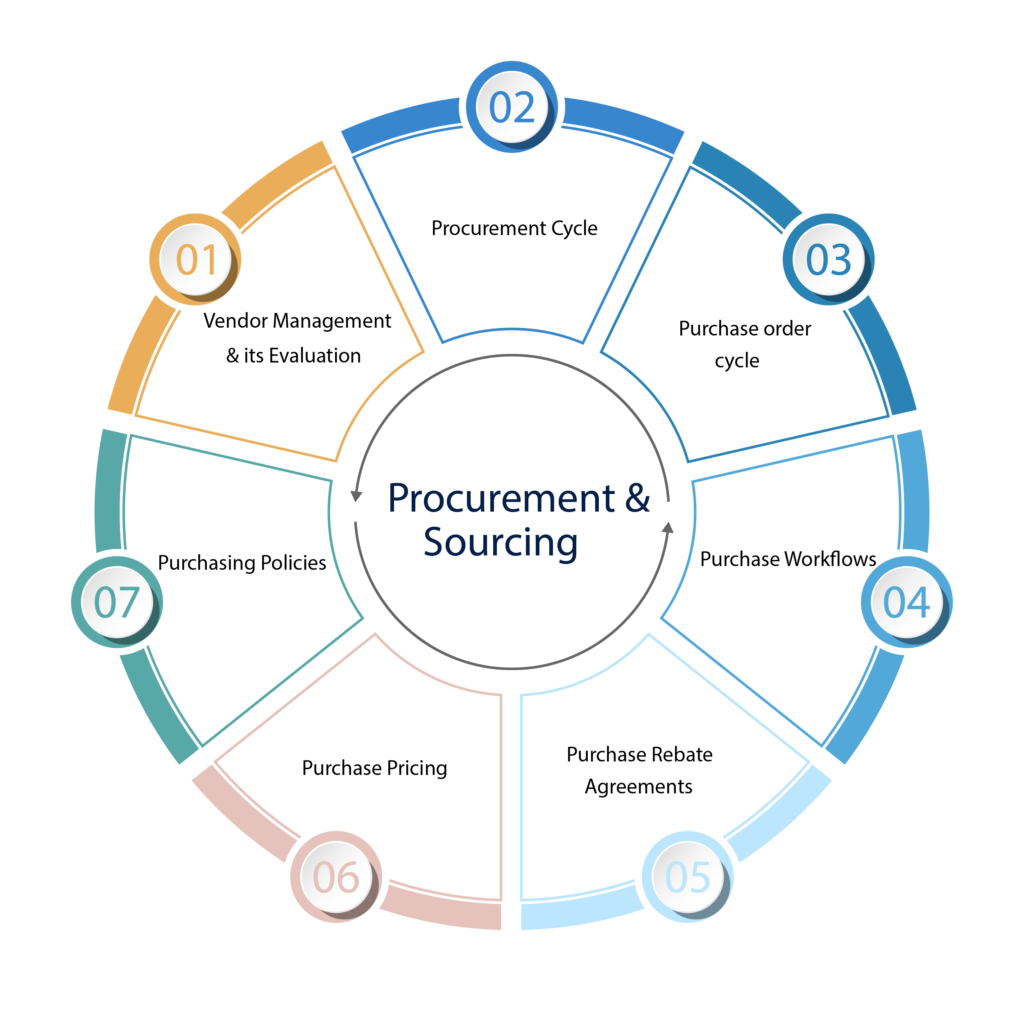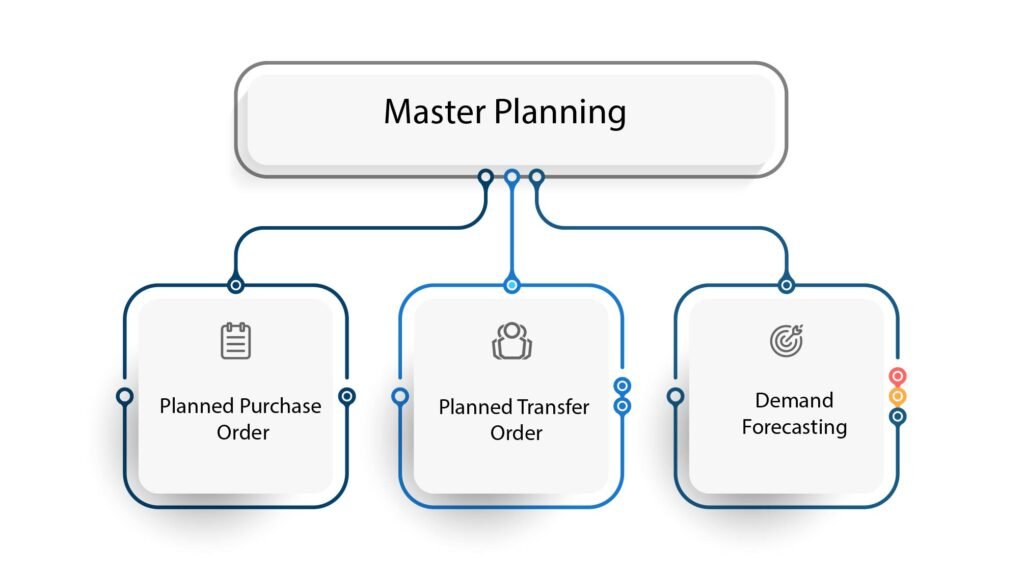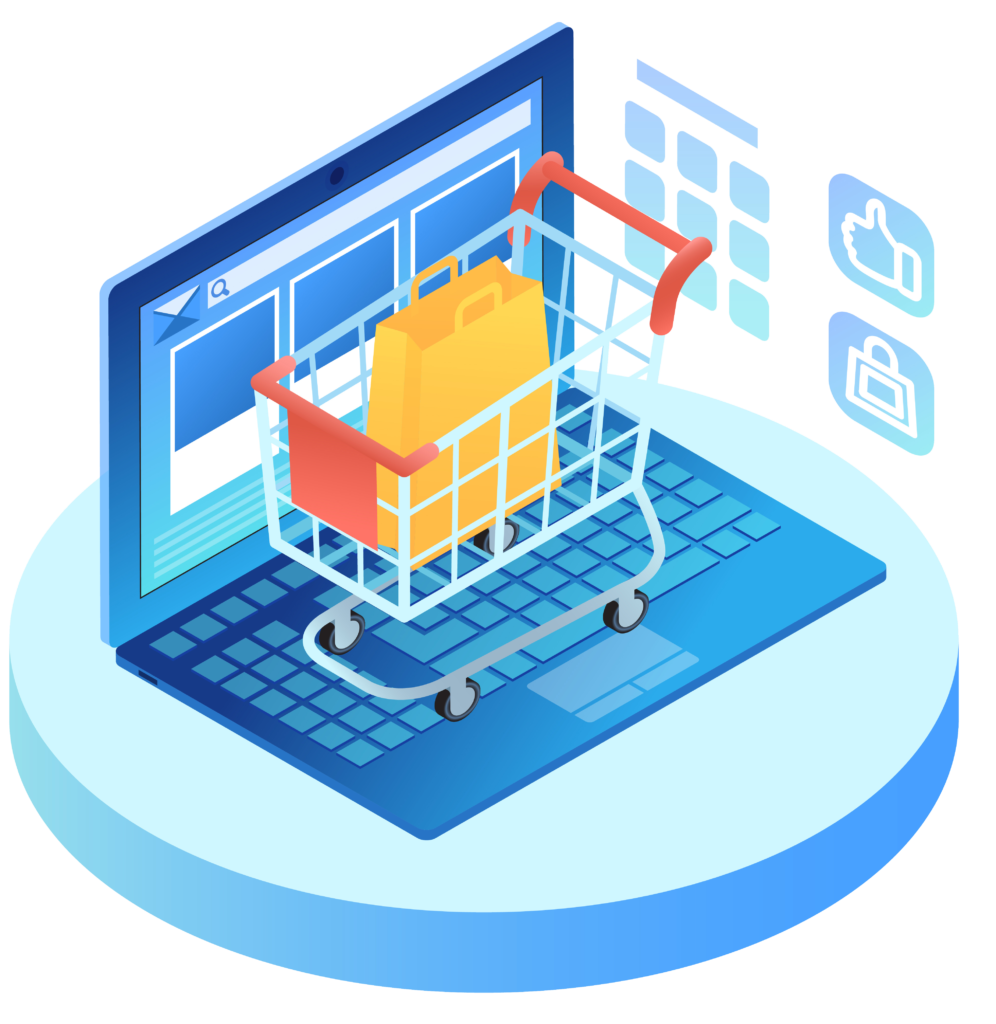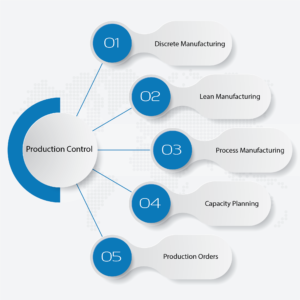
D365 Modules
General Ledger:
The General Ledger module within Microsoft Dynamics AX ERP system covers company’s financial records. The General Ledger is a register of debit and credit entries. These entries are classified using the accounts that are listed in a chart of accounts. We can allocate, or distribute, monetary amounts to one or more accounts or account and dimension combinations based on allocation rules. We can also design Tax based on country region.
Below are the key features of General Ledger module:
- Consolidation & Elimination Process
- Chart of account (Main accounts)
- Financial Dimension
- Allocation Rule
- Sales tax
Accounts Payable:
The Accounts Payable module within Microsoft Dynamics AX ERP system covers setup, vouchers, invoices, check printing, check maintenance, etc. This module is used to process vendor invoices and payments to vendors, including a three-way match with purchase receipts.
Below are the key features of Accounts Payable module:
- Vendor Creation
- Purchase order confirmation
- Product Receipt (GNR)
- PO invoicing
- Vendor payments
- Invoice Journal


Accounts Receivable & Credit management Module:
The Accounts Receivable module within Microsoft Dynamics AX ERP system covers customer’s data and their transactions. The accounts receivable cycles are customer invoicing, customer payment, and settlement. These business processes manage and control the execution of customer sales processes. These processes are based on sales activities and product delivery cycles in the sales and marketing processes, which manage and control the execution of the order to cash business processes.
Below are the key features of Accounts Receivable & Credit management module:
- Customer payment
- Account statement
- Credit Management
- Credit control
- Customer master
- Sales Order
- Free text invoice
Cash & Bank Management:
The Cash & Bank Management module within Microsoft Dynamics AX ERP system covers bank accounts and the financial instruments that are associated with those bank accounts. These instruments include deposit slips, checks, bills of exchange, and promissory notes. You can also reconcile bank statements and print bank data on standard reports.
Below are the key features of Cash & Bank Management module:
- Work with cash and bank management processes.
- Use cash and bank management workspaces.
- Make deposits.
- Cancel payments.


Fixed Assets:
The Fixed Assets module within Microsoft Dynamics AX ERP system covers automated accounting of fixed assets, intangible assets, and fixed assets that aren’t considered valuable, from the time when they are put into operation and posted to the appropriate accounts until they are disposed of.
Below are the key features of Fixed Assets module:
- Fixed asset Maintained
- Service life
- Depreciation
- Net book value
Budget Planning:
The Budget Planning module within Microsoft Dynamics AX ERP system covers policies, procedures, and requirements for budget preparation. This module provides information about how to configure and use basic budgeting and budget control in Dynamics 365 Finance.
Below are the key features of Budget Planning module:
- Monthly Budget
- Yearly Budget
- Budget control


Product Information Management:
Product information Management module within Microsoft Dynamics AX ERP system covers all the product information such as images, technical specifications, documents, translations, prices & other financial information are spread in the organization in different divisions and departments. This module in D365 will collect & gather this information from different isolated areas in the organization into one product information base that all will share.
Below are the key features of Product Information Management module:
- Product definition
- Product Master & product variants
- Configuration technologies
- Product Lifecycle Management
- Released Products
Procurement & Sourcing:
Procurement & Sourcing module within Microsoft Dynamics AX ERP system covers all the steps from identifying a need of a product & services, through procuring the product, receipt, invoicing & processing of payment with vendors.
Below are the key features of Procurement & Sourcing module:
- Vendor Management & its Evaluation
- Procurement Cycle (Purchase Requisition Request for Quotation Purchase Orders)
- Purchase order cycle (Confirmation, Registration, Receipt, Invoicing)
- Purchasing Policies
- Purchase Workflows
- Purchase Pricing (Trade Agreement & Purchase Agreement)
- Purchase Rebate Agreements
- Purchase Returns
- charges on Purchase orders


Sales & Marketing:
The Sales and Marketing module within Microsoft Dynamics AX ERP system delivers powerful integrated sales and marketing management capabilities to increase sales and to help build and strengthen customer relationships.
- Customer Management
- Sales Cycle (Sales quotation Sales order)
- Sales Workflows
- Sales order cycle (Confirmation, Picking list, Picking list registration, Invoicing)
- Sales Pricing (Trade Agreement & Sales Agreement)
- Sales Returns
- Intercompany orders
- Sales Commissions
- Sales Trade Allowances
- Sales Rebate Agreements
Inventory Management:
The Inventory management module within Microsoft Dynamics AX ERP system delivers inbound and outbound operations, quality assurances, warehouse activities and inventory control,
Below are the key features of Inventory management module:
- Transfer Orders
- Output Orders
- Arrival Overview
- Inventory Journals
- Quality Management
- Quarantine Management
- Inventory Closing & Adjustment
- Boxing Logics


Warehouse Management:
The Warehouse management module within Microsoft Dynamics AX ERP system covers automate warehouse processes. It is an integrated warehousing solution for advanced distribution and order fulfilment that adds to the current capabilities of Microsoft Dynamics AX to support distribution companies and logistics providers. Scanners and other mobile devices can be used to optimize precision in picking & put away processes.
Below are the key features of Warehouse management module:
- Inbound Process via Mobile devices.
- Outbound Process via Mobile devices
- Replenishment process
- Cycle Count Process
- Containerization Process
- Sales Consolidation
- Consolidation of Load based on Zones
- Truck Loading process
Transport Management:
The Transport management module within Microsoft Dynamics AX ERP system covers company’s transportation and identify vendor and routing solution for inbound & outbound orders. It helps in identifying the fastest route or the least expensive rate for a shipment.
Below are the key features of Transport management module:
- Transportation Engines
- Freight Reconciliations
- Appointment Scheduling
- Rating
- Routing


Master Planning:
The Master Planning module within Microsoft Dynamics AX ERP system determines the future needs of raw materials and capacity to meet Entity’s goal.
Below are the key features of Master Planning module:
- Planned Purchase Order
- Planned Transfer Order
- Demand Forecasting
Retail:
The Retail module within Microsoft Dynamics AX ERP system covers end-to-end integrated solution for retailers that includes back-office processes, such as merchandising and inventory, as well as front-office channels.
Below are the key features of Retail module:
- Channel Management – Stores, call centre and online
- Merchandising products and services
- Product recommendations
- Pricing and discounts
- Loyalty management
- Customer and workers management
- Commerce reporting
- Kit Ordering
- Continuity programmes
- Distributed order management
- Stock management and replenishments
- Store financials


Production Control:
The Production Control module within Microsoft Dynamics AX ERP system covers the specific steps that are required to complete the manufacture of an item.
Below are the key features of Production Control module:
- Discrete Manufacturing
- Lean Manufacturing
- Process Manufacturing
- Capacity Planning
- Production Orders.

